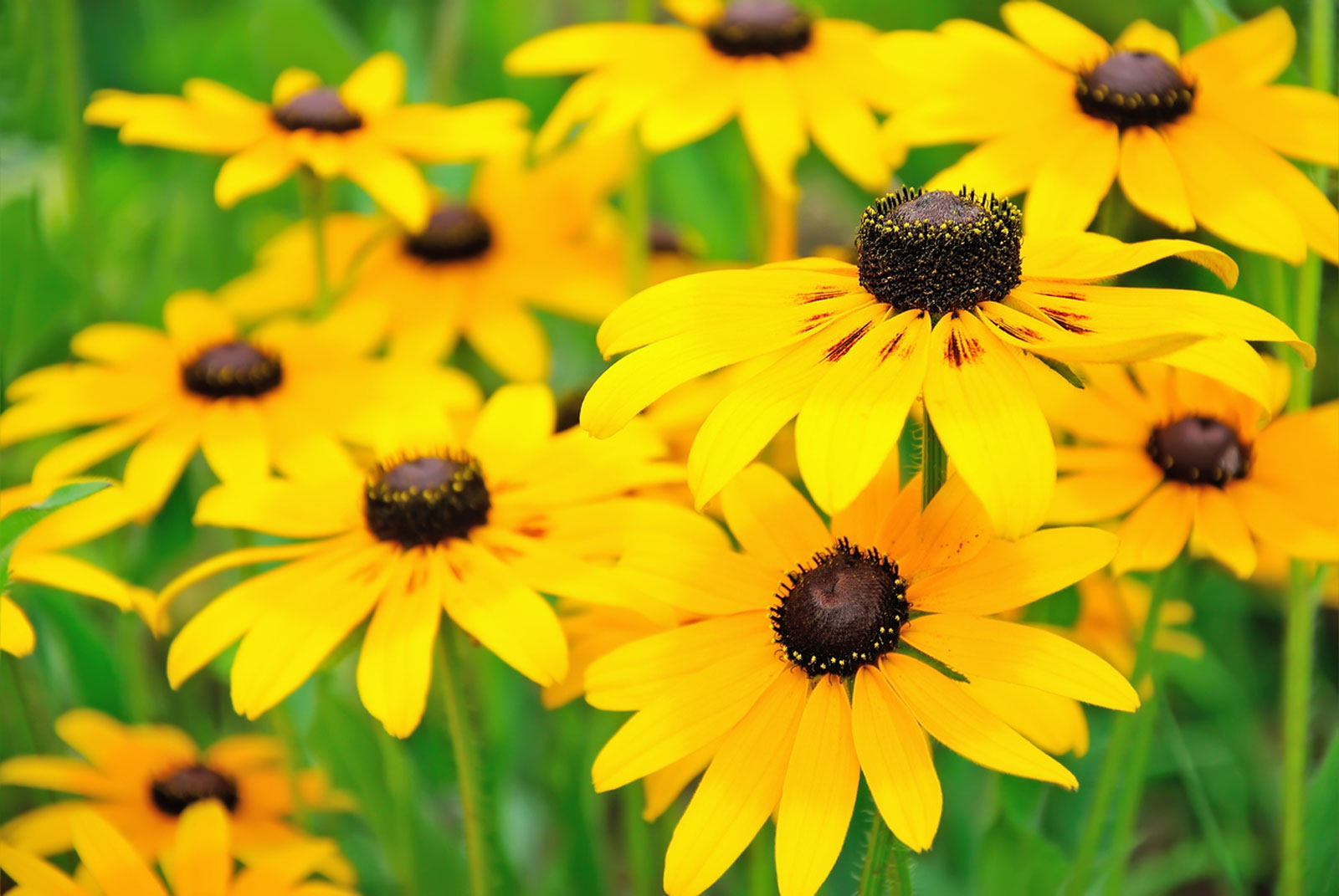-

Plants with Altitude
Regionally Native Plants for Wyoming Gardens
Rocky Mountain Beardtongue
Penstemon strictus Bentham


Of the purple/blue penstemons, Rocky Mountain beardtongue is the species most commonly found at nurseries. With tall spikes of blue-purple flowers and shiny dark-green leaves, it is attractive in any garden and very attractive to pollinators, too. Like most penstemons, it has a short blooming season—typically the month of June. Also like most, it prefers dry soils. With excess water, it will develop mildew on the leaves, and the root crowns may rot, especially if it goes into winter with wet feet. Rocky Mountain beardtongue can reseed aggressively, but cutting off the flower spikes after the blooms fade is an easy way to control this tendency.
Other nice blue-to-purple penstemons to consider are Grand Mesa penstemon (P. mensarum Pennell), with tall spikes of deep-blue flowers; Wasatch penstemon (P. cyananthus Hook.), with bright-blue flowers; and P. virens Pennell ex Rydb., sometimes called blue mist beardtongue. This last one is smaller, only a foot or so tall, and can vary in color from purple to blue. It is also happy with light shade, unlike most other penstemons from our region. An even shorter penstemon is mat penstemon (P. caespitosus Nutt. ex Gray). It forms a great groundcover in some rather windblown locations and is covered with purple-blue flowers in the late spring.
Several species have flowers of glorious, to-die-for turquoise and sky-blue, including P. angustifolius Nutt. ex Pursh (narrow-leaf) and P. nitidus Douglas ex Benth. These two native penstemons are much more challenging to grow—they’re just not happy except in quite dry, neglected garden beds. In a garden setting, these are often very short-lived. Fortunately, both are Wyoming natives. Look for their amazing bursts of color in May and try them in the garden if you really like a challenge. P. angustifolius and P. nitidus are longer lived in troughs or rock gardens. The seeds of many penstemons require stratification for germination.
For red penstemons, see Beardlip Penstemon. For pink penstemons, see Palmer's Beardtongue.

Photo by Jennifer Thompson
Other Blue-to-Purple Penstemons
Penstemon virens, or Blue Mist Beardtongue

Photo by Jennifer Thompson
Navigation
- Beardlip Penstemon
- Black-Eyed Susan
- Blanket Flower
- Blue Flag Iris
- Blue Sage, Pitcher Sage
- Colorado Four O’Clock
- Columbine
- Cutleaf Daisy
- Desert Prince’s Plume
- Dotted Blazing Star
- Easter Daisy, Townsend’s Daisy
- Garrett’s Firechalice
- Harebells
- Kelsey’s Phlox, Marsh phlox
- Lewis’ Flax
- Milkweed
- Missouri Evening Primrose
- Narrow-Leaf Coneflower
- Palmer's Beardtongue
- Pasqueflower
- Perennial Sunflower
- Poppy Mallow, Prairie Wine Cups
- Prairie Smoke
- Purple Prairie Clover
- Rocky Mountain Beardtongue
- Sand Phlox, Cleft Phlox
- Scarlet Gilia
- Scarlet Globemallow, Cowboy's Delight
- Sharp-Leaf Twinpod
- Small-Leaf Pussytoes
- Soapweed Yucca
- Stemless Four-Nerve Daisy
- Sugarbowl Clematis
- Sulfur Buckwheat
- Tufted Evening Primrose
- Upright Prairie Coneflower


